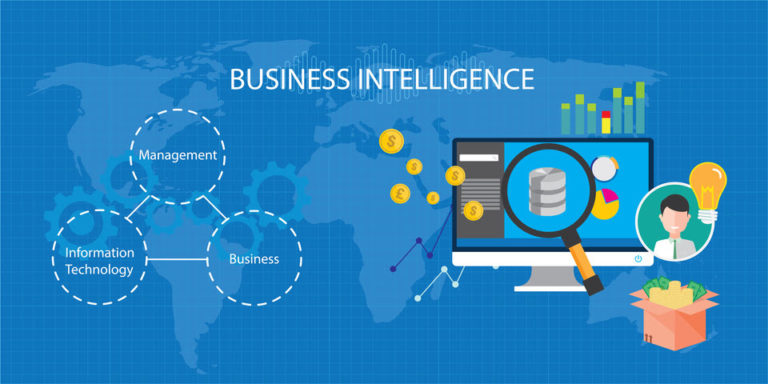What is CI CD? Continuous integration and continuous delivery explained
By: Flaka Ismaili April 24, 2023
So, when a developer checks some code into the repository, it goes into a staging repository or some form of locked state, until the verification and validation requirements are met. Files need to be moved from one environment to another, which can be time consuming. If you are using mocked data in your development environment , make sure that a decent amount of test data is available.

In web applications, for example, HTTPUnit and Selenium directly interact with the user interface to test the product. Since a unit test explains how the code should work, developers can review unit tests to get current on that area of the code. Small changes minimize the possibility and impact of integration problems.
High-Quality Projects
Continuous integration addresses fixing bugs, improving the quality of your software, and decreasing the time required to launch a new update. If you want to enhance your project and create more impactful software for your target audience, then add continuous integration to the list of all the tools you wish https://www.globalcloudteam.com/ to use for your application. This tutorial will help you with all your knowledge to start continuous integration practices. Continuous testing implies that the CI/CD pipeline integrates test automation. Some unit and functionality tests will flag issues before or during the continuous integration process.

They’re the cheapest and fastest tests to run since they don’t require a lot of dependencies or mocking. Install CircleCI on a private server that your team sets up and maintains for security. This provides full System Administrator control for complete customization. Your team determines the update cadence to fit your maintenance schedule.
Staging environment tests
Finding errors earlier can reduce the amount of work necessary to resolve them. By committing regularly, every committer can reduce the number of conflicting changes. Checking in a week’s worth of work runs the risk of conflicting with other features and can be very difficult to resolve. In addition, performing a nightly build is generally recommended.[citation needed] These are lower bounds; the typical frequency is expected to be much higher. In 2010, Timothy Fitz published an article detailing how IMVU’s engineering team had built and been using the first practical CI system. While his post was originally met with scepticism, it quickly caught on and found widespread adoption[12] as part of the Lean software development methodology, also based on IMVU.
To recap, continuous integration packages and tests software builds and alerts developers if their changes fail any unit tests. Continuous delivery is the automation that delivers applications, services, and other technology deployments to the runtime infrastructure and may execute additional tests. Once features are complete and system tested, and we receive intent to deploy them, they are merged to the sprint branch – some may float across several sprints, usually the more complex ones. We “rename” the sprint branch to “regression” (this allows CruiseControl to pick it up without any reconfiguration) and then regression/integration testing begins on the cc-built EAR. Trunk Based Development (TBD) is the practice of integrating code changes into the trunk (a.k.a, master, mainline) at least once per day – preferably multiple times per day. Continuous Integration (CI) is a similar practice except that it also involves verifying the code changes using automated tests.
Agile & DevOps
This is the prime reason why enterprises today are opting for Continuous Integration and saying goodbye to old methodologies. This article will serve as a comprehensive and elaborate guide to help you begin and excel with CI. See how world-class CI/CD, automation, and security can support your workflow. Nurture and grow your business with customer relationship management software. This approach sounds ideal, but the reality is that two developers may end up editing the same part of a file.
- Continuous integration (CI) is an agile and DevOps best practice where developers integrate their code changes early and often to the main branch or code repository.
- However, building a replica of a production environment is cost-prohibitive.
- Figure 3 illustrates how the System Team helps integrate the work of all teams on the ART frequently, providing some objective evidence of progress.
- Tests that require a full delivery environment, such as performance and security testing, are often integrated into continuous delivery and done after a build is delivered to its target environments.
- Integrating code frequently does not, by itself, offer any guarantees about the quality of the new code or functionality.
- Continuous integration establishes an automated way to build, package, and test their applications.
- Nightly builds are when the codebase is checked out of the repository at the end of the working day, built, and tested.
Establish criteria and a timeframe for completion of code reviews to prevent bottlenecks. Once the code reviews pass, then merge the new code to whatever branch is determined by your branching strategy. When the work in the branch is committed, CI/CD processes are triggered. While it may look easy, it will require true commitment from your team to be effective. You will need to slow down your releases at the beginning, and you need buy-in from the product owners to make sure that they do not rush developers in shipping features without tests.
Scaled Agile, Inc
The most important part of the CD is that the code is always in a deployable state. It refers to the process of automating the integration of code changes coming from several sources. The process comprises several automation tools that emphasize on the code’s correctness before Integration. Those seeking the most flexibility can ground their process in the philosophies of improvement kata and kaizen.

This data is also used to keep other stakeholders informed about the timeline for rollouts. CI provides benefits for both the development team and the organization at large, which are covered below. It can be intimidating to tackle a large project by trying software continuous integration to do everything at once. Instead of saying, “I’m going to build a website today,” start with “I’m going to map out the user interface and the website functionality.” System-level testing frequently happens during the iteration, ideally after every commit.
Strategies for Implementing Continuous Integration/Continuous Deployment
Continuous integration, deployment, and delivery are three phases of an automated software release pipeline, including a DevOps pipeline. These three phases take software from idea to delivery to the end-user. Continuous integration covers the process of multiple developers attempting to merge their code changes with the main code repository of a project. The development environment is a shared environment with other developers.

In addition, when developers work on shorter commit cycles, it is less likely that multiple developers will edit the same code and require a merge when committing. Continuous integration is a process in devops where changes are merged into a central repository after which the code is automated and tested. The continuous integration process is a practice in software engineering used to merge developers’ working copies several times a day into a shared mainline.
Unit Testing
In a CI/CD workflow, teams review and approve code in pull requests or leverage integrated development environments for pair programming. As a result, teams need a balanced approach that allows them to build-in quality and gets fast feedback on their integrated work. For purely software-based solutions, continuous integration is relatively easy to achieve with modern tools. Many teams use feature flags, a configuration mechanism to turn features and code on or off at runtime. Features that are still under development are wrapped with feature flags in the code, deployed with the main branch to production, and turned off until they are ready to be used. In recent research, devops teams using feature flags had a ninefold increase in development frequency.










